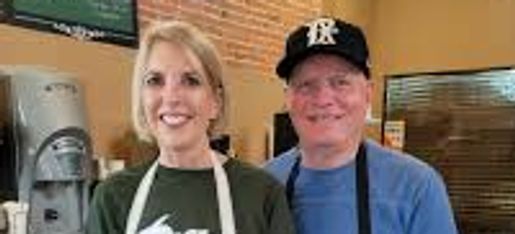About Downtown Carrollton

About Downtown Carrollton
There’s a lot that’s new about our historic neighborhood! We celebrated our Centennial in 2013, but our party has just begun. Something old and something new. We have 2 wonderful parks that pay homage to the very center of community life that started our beloved City of Carrollton over a century ago. The Switchyard brought commerce and the founders of our community. Mercantile interests stimulated the proliferation of restaurants, retail stores and a plethora of services. A community came together and kept this legacy alive. Today, the DART, the old railway, the small businesses and a thriving community bear the markers of where we were and show us how far we’ve gone. Our HISTORIC DOWNTOWN CARROLLTON ASSOCIATION (HDCA) continues this legacy by holding on to these mercantile beginnings. Hand in hand with the City of Carrollton and our community, we hope to preserve this legacy for the next 100 years. Come visit with us, and feel the exciting new energy, friendly hometown feels, enjoy the great food, shops, amenities and the events in our new, yet historic Downtown Carrollton!
HDCA Contact Information for this website and HDCA Events
Email: info@historicdowntowncarrollton.com
Mailing Address: 1011 South Broadway Carrollton, TX 75006
HDCA Board and Committee Contacts:
- President - Paula McDonald
- Vice-President - Eddie Lopez
- Treasurer - John Osborn
- Secretary - Chris Lynn
- Membership Chair - Shaun Walvoord
- Marketing Chair - Carolyn Benavides
Follow us on Facebook: https://www.facebook.com/shopsofdowntowncarrollton/
History of Carrollton
01/21
The History of Carrollton

The earliest known visitors to this area just prior to and during the coming of white settlers were Caddo, Wichita, and Tonkawa Indians. With the empresario land grants provided by the government of Mexico and, later, the Republic of Texas, white settlers began visiting, and then claiming land in what is now North Central Texas. The area now known as Carrollton was part of the Peters Colony Grant (four grants in total by the Republic of Texas), and the name of the colony lives on in a local street name.
The first known settlers in the Carrollton area were William and Mary Larner, who arrived in 1842. In that same year, Isaac Webb visited the area and returned to his home in Missouri with samples of the local soil.
In 1843, Isaac Webb and his wife, Mary Hughes Webb left Barry County, Missouri, to settle in this area. Four weeks after their departure, they crossed the Red River into Texas. Moving in with Mary's brother and his wife, they began to build their new home in Texas.
The A.W. Perry family claimed their headright in 1844. Both the Larners and the Perrys were from Carrollton, Illinois, and the name came to be used for the growing settlement here. A.W. Perry established a mill here in partnership with Wade H. Witt.
Sometime in the 1840's the Webbs and other settlers sought the services of a circuit-riding preacher. The Webbs donated their cabin for religious services, and it came to be known locally as Webb's Chapel. Webb Chapel lives on as the name of a major Carrollton thoroughfare.
Agriculture was the first major industry in the area, and some of the first buildings here were the grist mills established on the Elm fork of the Trinity River. The mills on the Trinity are remembered today with Trinity Mills Road that runs through Carrollton.
Carrollton's first school was established in 1856, and the railroad (Dallas & Wichita RR) arrived in 1881. The next year, it was noted in the Texas Gazeteer that Carrollton boasted a population of 500 and one steam grist mill, four cotton gins, two churches and two schools.
In 1890, Carrollton's first telephone was installed. A local cotton patch was being replaced as a location for several new businesses, and in 1900, the area was platted as the town square. Carrollton's old town square still exists, surrounded by colorful local businesses. In 1902, Carrollton's first bank was established.
By 1921, Carrollton had both a volunteer fire department and a Chamber of Commerce. In 1924, Carrollton was connected with Dallas, when the Texas Inter-Urban railway established its electric train service between the two communities. Carrollton was now unique in the area in having three separate rail lines and services meeting at the local depot. This access to rail transport would be a powerful force in the growth of Carrollton through the 1950's.
By 1935, Carrollton had its first City Hall, water mains and fire hydrants, and a sewer system. By now, the city was a major processor and shipper of grain and cotton.
1950 saw Carrollton with a population of around 1,600, but the city was to grow substantially over the next four decades. Growth was substantial in the 1970's when population grew to over 40,000 and much of the city's current housing was built.
Carrollton continues to thrive and grow today. The city is estimated to have over 135,000 residents today.

💔 **Farewell, C Square Café** 💔
For decades, Cheri & Stan Newman have given us more than coffee—they gave us a place where friendships grew, laughter echoed, and memories were made. As they close their doors, we invite you to join the Historic Downtown Carrollton Association in a heartfelt “Going-Away” Celebration on Tuesday, December 30, 3–7PM.
Let’s gather one last time to honor the café that felt like home and the couple who made it so.
📍 C Square Café | 🕒 Dec. 30, 3–7PM
